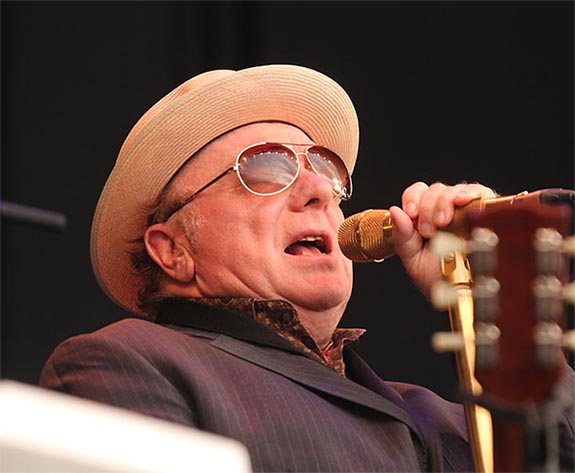Welcome to Music Friday when we bring you fabulous songs with jewelry, gemstones or precious metals in the lyrics or title. Today, music legend Van Morrison serves up his 2006 interpretation of "Big Blue Diamonds," a frequently covered song that was first released 70 years ago.
Written by Earl J. "Kit" Carson, "Big Blue Diamonds" tells the story of a young woman who pursues material wealth instead of true love, but then regrets her terrible mistake.
Morrison sings, "Oh, she wanted more than I had money to buy / So she left me sad and lonely I am told / Big diamonds, big blue diamonds / Now she'll trade them / For a love behind the little band of gold."
Country singer Red Perkins introduced the song as a 78 rpm single in 1950. Since then, a cavalcade of performers across many music genres — including country, rhythm and blues, jazz and rock and roll — have put their signatures on the song.
Here's just a partial list of the artists who have covered "Big Blue Diamonds": Tex Ritter (1950); Jimmy Dean and his Texas Wildcats (1955); Jack Lionel (1961); Little Willie John (1962) Sam The Sham and The Pharaohs (1965); Tommy Tate (1966); Little Johnny Taylor (1967); Gene Summers (1971); Arthur Prysock (1971); Mel Street (1972); Ernest Tubb (1972); Jerry Lee Lewis (1974); Willy DeVille (1990); Don Walser (1996); Percy Sledge (2004) and Morrison (2006).
Sir George Ivan "Van" Morrison was born in Belfast, Northern Ireland, in 1945. His dad worked in a shipyard, but had previously lived in Detroit, where he amassed a huge, and diverse, record collection. Morrison grew up listening to blues, country and gospel. By the time he was 13, the boy was singing and playing the guitar and sax in several bands.
At 22 years old, Morrison became an international star with his timeless hit, "Brown Eyed Girl." That song was followed by a slew of chart-toppers, including 1970's "Moondance" and 1971's "Tupelo Honey."
Over the years, Morrison has been called one of the prolific recording artists and hardest working live performers of his era. The 75-year-old has been touring regularly since 1958 and, in 2017, released his 37th and 38th studio albums.
He was knighted in 2016 to honor his services to the music industry and to tourism in Northern Ireland. The six-time Grammy winner was inducted into the Rock and Roll Hall of Fame in 1993.
Please check out the audio track of Morrison performing "Big Blue Diamonds." The lyrics are below if you'd like to sing along…
"Big Blue Diamonds"
Written by Earl J. "Kit" Carson. Performed by Van Morrison.
Blue diamonds, big blue diamonds on her finger
Instead of a little band of gold
Big diamonds, big blue diamonds tell the story
Of the love that no one man could hold
Oh, she wanted more than I had money to buy
So she left me sad and lonely I am told
Big diamonds, big blue diamonds
Now she'll trade them
For a love behind the little band of gold
Blue diamonds, big blue diamonds how they sparkle
But what can they do to warm your heart and soul?
When you're lonely in the moonlight and you want lovin'
Big blue diamonds don't they seem so reckless and bold
I'd gladly do my part, to mend a broken heart
But a love that's warmed over soon grows cold
Big diamonds, big blue diamonds
I don't want them, no
I just want a love behind the little band of gold



